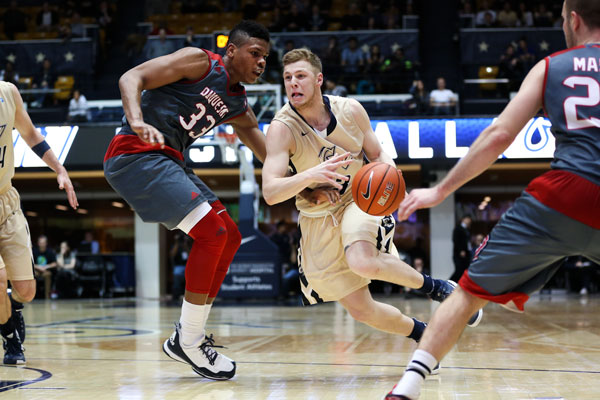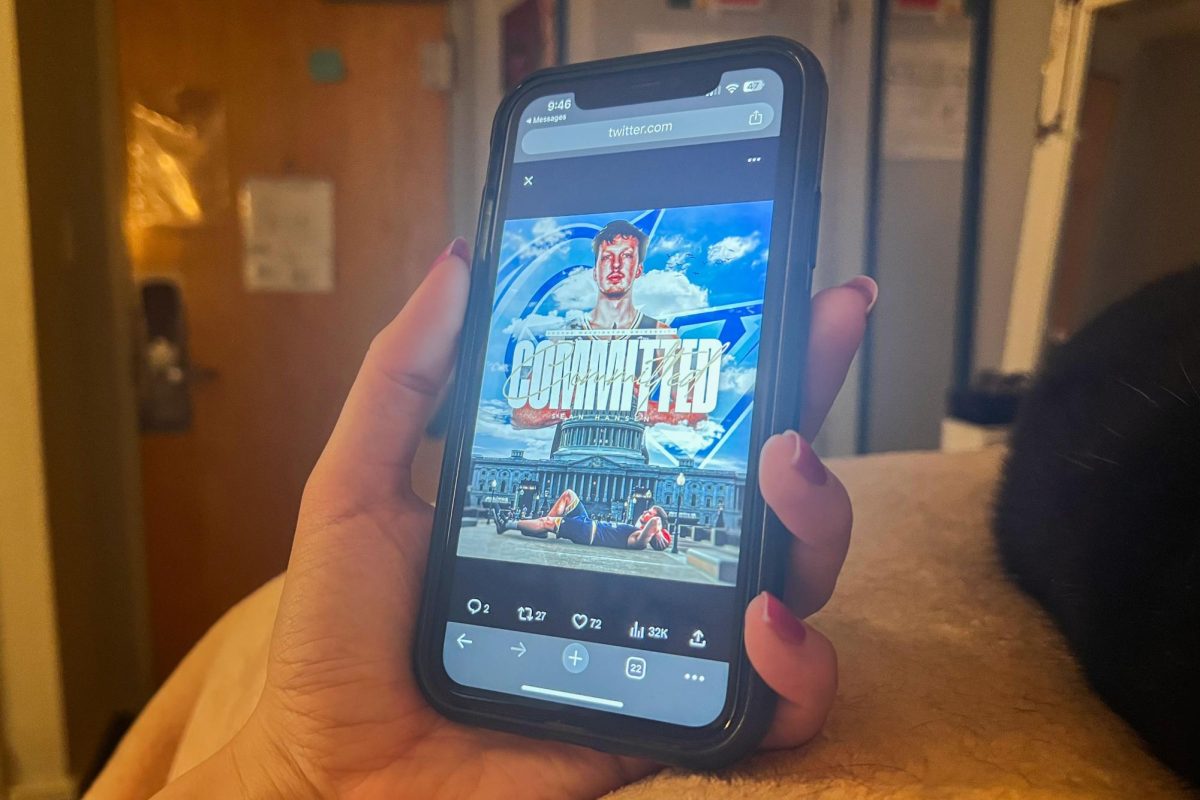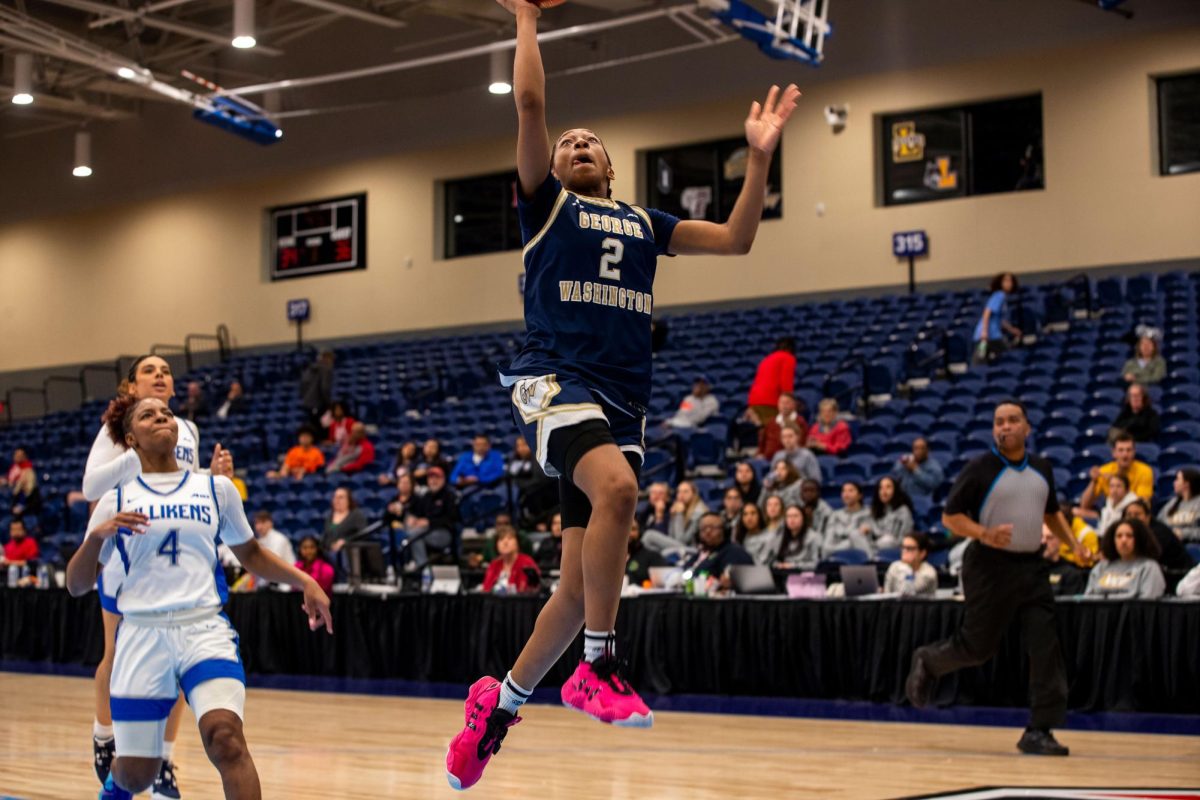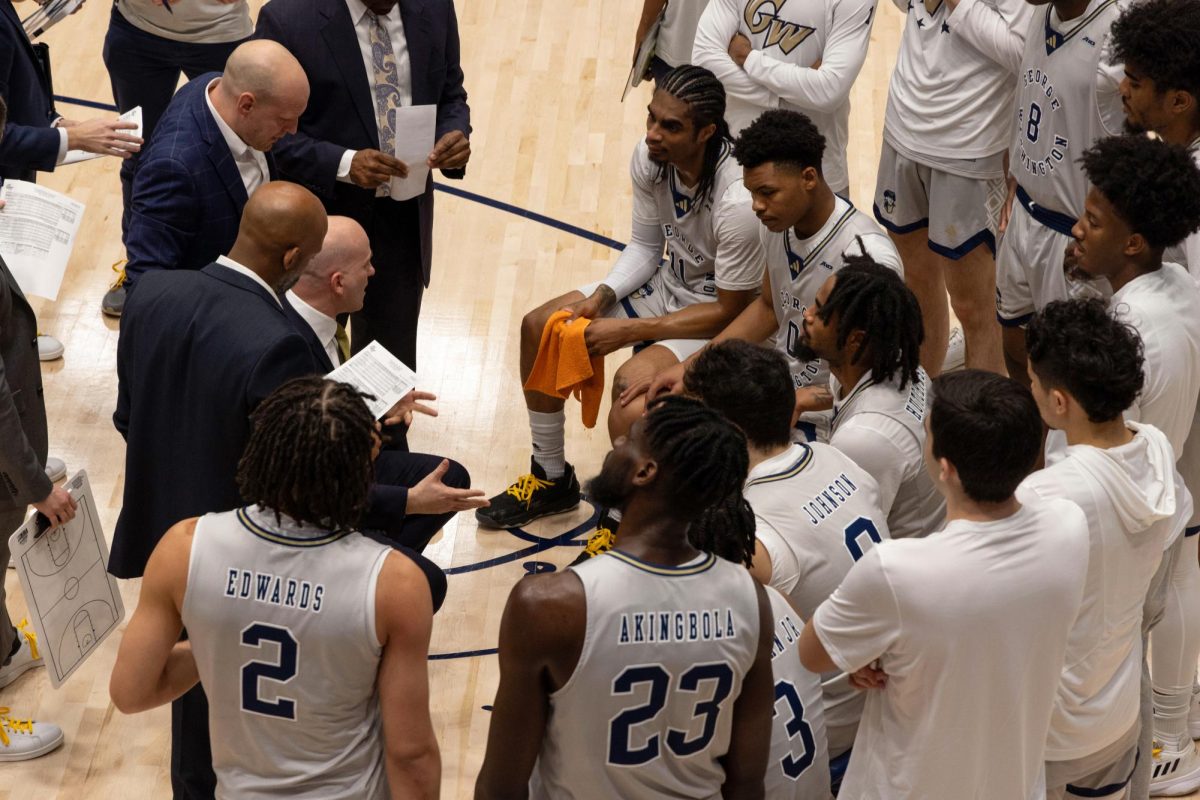Look at the box score or listen to the postgame interview from GW’s loss at Dayton on Feb. 1, 2014, the last time the Colonials had played the Flyers at UD Arena before a 77‒70 loss on Friday, and you might notice several similarities between the two games.
GW, playing down at least one starting guard – in both cases including point guard Joe McDonald – played a dominant inside game but struggled to get points from the free throw line or from the guard spots.
“We’re not making all our free throws and they were hitting their free throws,” Lonergan said in 2014. “We needed to get the ball inside, when we get the ball inside good things happen.”
“We weren’t shooting well, some of our guards so we had to allow Isaiah [Armwood] and Kevin [Larsen] out there to shoot some jump shots,” he added.
Fast forward two years, sub in Wake Forest transfer Tyler Cavanaugh for Villanova transfer Isaiah Armwood, and the same words apply.
“We’ve got to learn from it, we’ve got to improve and we’ve got to get more out of a couple of our guys,” Lonergan said Friday. “We did some good things and Tyler kept us in the game in the first half with his shooting.”
In 2014, though, GW was down its three most important perimeter players. McDonald was out with a hip injury that later required offseason surgery, along with Maurice Creek and Kethan Savage. On Friday, McDonald was the only starter out, this time with an eye injury, but his absence continued to expose players whose production has stalled.
“Joe is our leader,” senior forward Kevin Larsen said. “He makes this team go, so without him, any game will be tough. I just can’t wait until we have him back.”
Tyler Cavanaugh, Larsen and Patricio Garino were a combined 19-of-31 from the field. Everyone else? 8-for-26.
That second figure includes a 2-for-6 night from the field from Yuta Watanabe, who has shot 8-for-27 since conference play began. For perspective, there were times last season when Lonergan said Watanabe was the best shooter on the team. The sophomore’s shooting has slipped from 34.8 percent to 27.6 percent on three-pointers and 83.1 percent to 68.3 percent on free throws.
Watanabe, currently spending a lot of his minutes on the wing though he projects more as a forward, pieces his role together based on whether or not he is playing alongside GW’s bigs or sliding inside for them to rest. His defense has remained consistent and he has improved as a shot blocker, but he also spends time at the top of GW’s 1-3-1 defense. It’s not that Watanabe’s role isn’t defined, it’s just that he has more than one defined role.
Lonergan has not panicked about the young Watanabe, who is averaging 25.8 minutes per game. He said after the team’s win at UMass, in which Watanabe was 0-for-2 from the field, that his message to Watanabe in practice and after games has been, simply, that his shot just isn’t going in. Lonergan has told Watanabe that he needs to find other ways to score, including trying to change his body so that he can finish at the rim.

“I don’t want him to be just a three-point shooter,” Lonergan said. “He’s got to get in the gym, which he does, so I’m not worried about his shot that much, but he’s just got to drive. He’s got to get a little tougher.”
Lonergan also cited early fouls as a factor diminishing Watanabe’s ability to be aggressive. Still, he had no fouls at halftime at Dayton and took four of his six shots in the first half, even seeming like he was actively trying to get himself going early. Watanabe, who also had three rebounds, two assists, two turnovers and two blocks (he may have had a hand in more) hit a runner late in the shot clock just after halftime and took only one more shot from there on out.
He’s not the only player who has struggled on offense lately. Sophomore Paul Jorgensen, who was 1-for-8 in Dayton, has begun the conference season shooting 6-for-29. He has been a good distributor, with 19 assists and eight turnovers in A-10 play, including the last two games in which he has started in place of McDonald.
But, as Lonergan said to backup point guard Miguel Cartagena after the 2014 Dayton loss where he started in place of McDonald, bad shots can be just like turnovers. Jorgensen is one of GW’s only players with the ability to create his own shot, but he’s passed up open teammates in favor of contested drives.
“We missed Joe today,” Lonergan said Friday. “I looked last year and he was our leading scorer in that game, he had 19, and our point guards today were 3-for-14.”
Other players spotted Lonergan in some nice stretches. Jordan Roland had two points ‒ off a pass he caught and shot in mid-air ‒ and three rebounds in four minutes. Alex Mitola was 2-for-6 but had six rebounds, seven assists, three turnovers and two steals.
“Jordan gave us four good minutes, he got three rebounds,” Lonergan said Friday. “That’s just all hustle. I’m looking forward to Joe getting back and Alex has proven that he deserves to really play a lot, but some other guys have to really refocus here as you hit the stretch run.”








